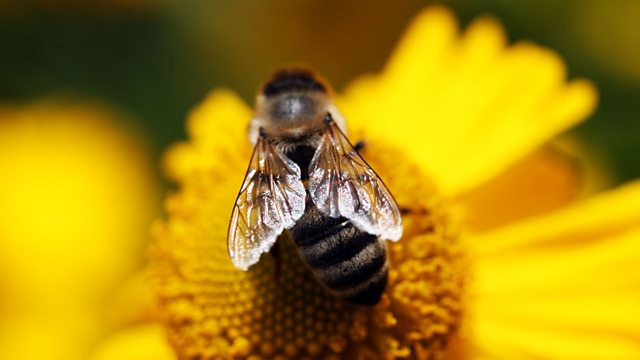Bees, Butterflies and Blooms episode 2: In the second programme of this three-part series, Sarah Raven takes her mission to halt the rapid decline in Britain’s essential bees, butterflies and pollinating insects to our towns, and challenges the RHS Britain in Bloom competition to make their floral displays more nectar- and pollen-rich, to help to increase the amount of food and habitat for pollinating insects throughout the spring and summer months.
With the use of intensive farming methods, regionalisation of crops, and the loss of wildflower meadows and grasslands estimated at around 98 per cent, the countryside can be feast or famine for the pollinators. So Sarah finds out whether British gardens could become a network of mini nature reserves for the pollinating insects.
Sarah starts her campaign by attempting to change the attitude of Harrogate’s successful gold medal-winning Britain in Bloom group. She challenges them to embrace nectar- and pollen-rich flowers over traditional bedding plants. Will the Bloom group take to her plans and ideas, or will the begonia bunch stand firm?
Sarah also challenges the UK gardening industry, the Horticultural Trades Association and the Royal Horticultural Society to champion pollinating insects by launching a ‘pollinator-friendly’ logo at the Chelsea Flower Show. The logo and label would enable gardeners to identify the best plants for bees and butterflies throughout garden centres and nurseries in the UK.
And at home, Sarah meets expert garden naturalist Steve Head, and explores her own garden’s suitability for insect pollinators. Inspired by what she discovers, she develops a nectar garden – a mini oasis for pollinators.
Bees, Butterflies and Blooms episode 2
Bees are insects with wings closely related to wasps and ants, known for their role in pollination and, in the case of the best-known bee species, the western honey bee, for producing honey. Bees are a monophyletic lineage within the superfamily Apoidea. They are presently considered a clade, called Anthophila. There are over 16,000 known species of bees in seven recognized biological families. Some species – including honey bees, bumblebees, and stingless bees – live socially in colonies while most species (>90%) – including mason bees, carpenter bees, leafcutter bees, and sweat bees – are solitary.
Bees are found on every continent except for Antarctica, in every habitat on the planet that contains insect-pollinated flowering plants. The most common bees in the Northern Hemisphere are the Halictidae, or sweat bees, but they are small and often mistaken for wasps or flies. Bees range in size from tiny stingless bee species, whose workers are less than 2 millimetres (0.08 in) long, to Megachile pluto, the largest species of leafcutter bee, whose females can attain a length of 39 millimetres (1.54 in).
Bees feed on nectar and pollen, the former primarily as an energy source and the latter primarily for protein and other nutrients. Most pollen is used as food for their larvae. Vertebrate predators of bees include primates and birds such as bee-eaters; insect predators include beewolves and dragonflies.
Bee pollination is important both ecologically and commercially, and the decline in wild bees has increased the value of pollination by commercially managed hives of honey bees. The analysis of 353 wild bee and hoverfly species across Britain from 1980 to 2013 found the insects have been lost from a quarter of the places they inhabited in 1980.
